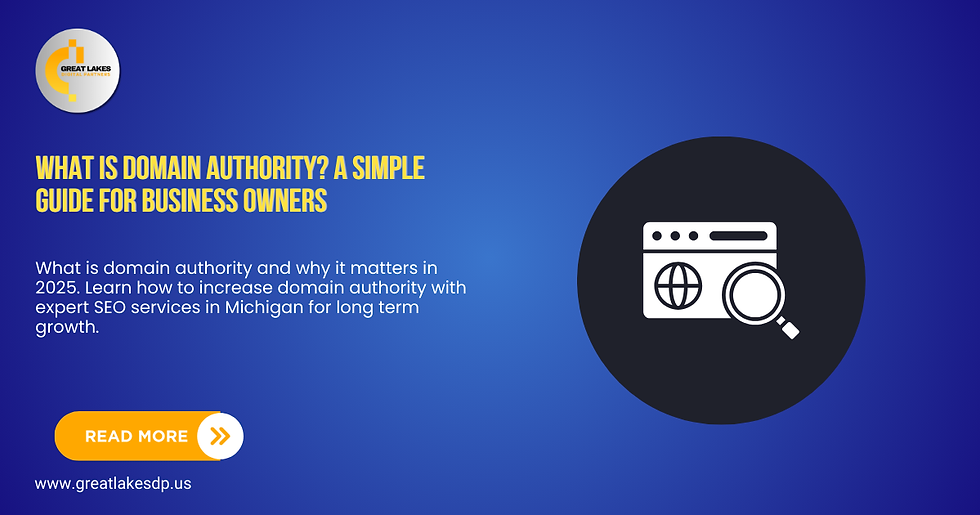Tips to Improve Website Loading Speed
- Great Lakes
- Mar 12
- 3 min read

Website loading speed is one of the most critical factors in digital success. In 2024, even a one-second delay can reduce conversions by 7%, and 53% of users abandon a site if it takes more than 3 seconds to load. Whether you're an e-commerce brand, a corporate business, or a service provider, optimizing website loading speed is non-negotiable. If you're looking for website design services in Michigan, ensuring fast load times should be a top priority to keep visitors engaged and improve conversions. In this guide, we’ll walk you through the most effective ways to reduce page load time and enhance the user experience.
Why Website Loading Speed Matters?
Improves User Experience – Faster websites create a seamless browsing experience, reducing bounce rates.
Boosts SEO Rankings – Google prioritizes fast-loading websites in search results.
Enhances Conversion Rates – Speed influences customer decision-making and sales.
Reduces Server Costs – Optimized websites consume fewer resources, cutting down hosting expenses.
1. Optimize Image Sizes
Large images slow down your site. Use modern formats like WebP and compress images with tools like TinyPNG or ImageOptim. Aim for a size under 100 KB without compromising quality.
2. Leverage Browser Caching
Set up caching rules so that repeat visitors don’t have to reload static resources. This can significantly reduce page load time and enhance user experience.
3. Minimize HTTP Requests
Each image, script, and CSS file requires an HTTP request. Combine CSS and JavaScript files, use CSS sprites, and remove unnecessary assets.
4. Enable Gzip Compression
Gzip reduces file sizes by up to 70%. You can enable it through your .htaccess file or server settings to compress HTML, CSS, and JavaScript files.
5. Use a Content Delivery Network (CDN)
A CDN stores copies of your site on global servers, ensuring users access the nearest server. This greatly reduces latency and improves website loading speed.
6. Optimize Web Hosting
Choosing the right hosting provider is crucial. A high-performance hosting service with SSD storage, dedicated resources, and fast response times is essential, especially for businesses using website design services in Michigan.
7. Reduce Redirects
Each redirect adds to load time. Keep them to a minimum and replace unnecessary 301 redirects with direct links.
8. Implement Lazy Loading
Lazy loading defers loading offscreen images and videos until they’re needed, significantly improving performance.
9. Minify CSS, JavaScript & HTML
Use tools like UglifyJS and CSSNano to remove unnecessary characters and whitespace from your code, reducing page load time.
10. Monitor Performance with Google Tools
Use Google PageSpeed Insights and Lighthouse to analyze and optimize your website’s performance.
Quick Fixes to Improve Website Loading Speed
Compress images to under 100 KB
Enable Gzip compression for text-based files
Use a CDN for faster content delivery
Minify CSS, JavaScript, and HTML
Reduce unnecessary redirects
Enable lazy loading for images and videos
Get Your Website Up to Speed with Expert Help!
Optimizing website loading speed is not just about better rankings—it’s about delivering a smooth, engaging experience that keeps users coming back. Whether you're a business owner, marketer, or developer, applying these speed-enhancing strategies will improve performance and revenue.
At Great Lakes Digital Partners, we specialize in creating high-speed, conversion-optimized websites. Our website design services in Michigan ensure your website is not only aesthetically pleasing but also technically flawless.
FAQs
1. How does website loading speed affect SEO?
Website loading speed directly impacts SEO rankings. Google considers page speed a ranking factor, meaning a slow website can lead to lower visibility in search results. Fast websites ensure better user engagement and lower bounce rates.
2. What is the ideal page load time for a website?
The ideal page load time is under 2 seconds. Studies show that sites loading within this time frame experience higher user retention and conversion rates.
3. What are the best tools to test website loading speed?
Some of the best tools include Google PageSpeed Insights, GTmetrix, Pingdom, and WebPageTest. These tools provide insights and actionable recommendations for optimizing speed.
4. Can website design affect page load time?
Yes! Poorly coded themes, excessive animations, and unoptimized images can slow down websites. Businesses investing in website design services in Michigan should ensure they choose lightweight, optimized designs.
5. How often should I optimize my website speed?
Regular performance audits should be done every three to six months. Additionally, after every major update or new feature addition, recheck your loading speed to ensure efficiency.











Comments